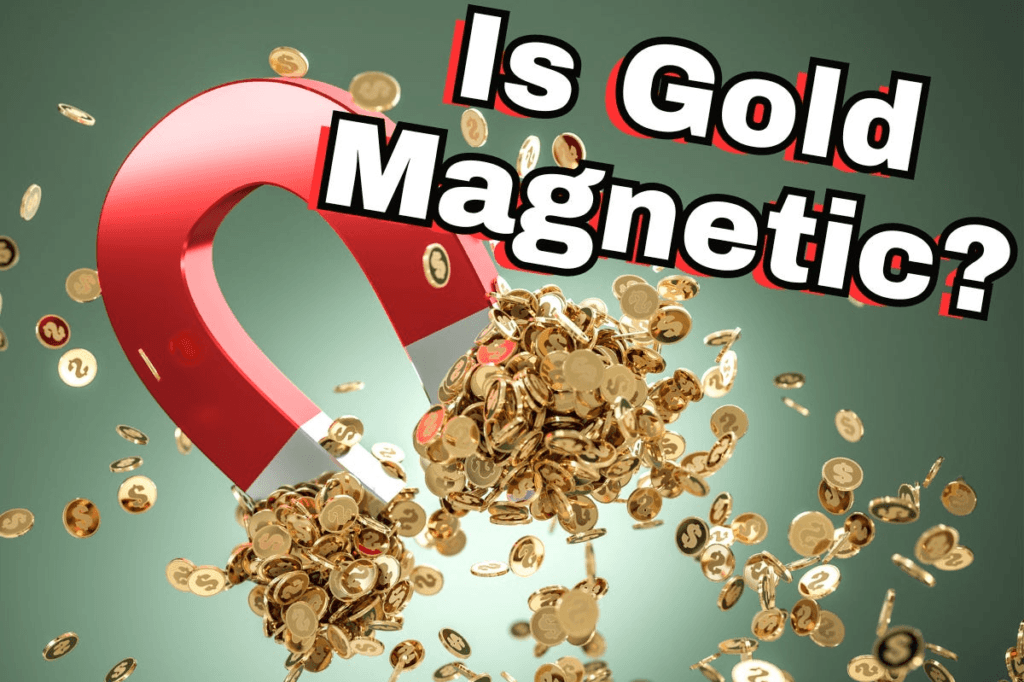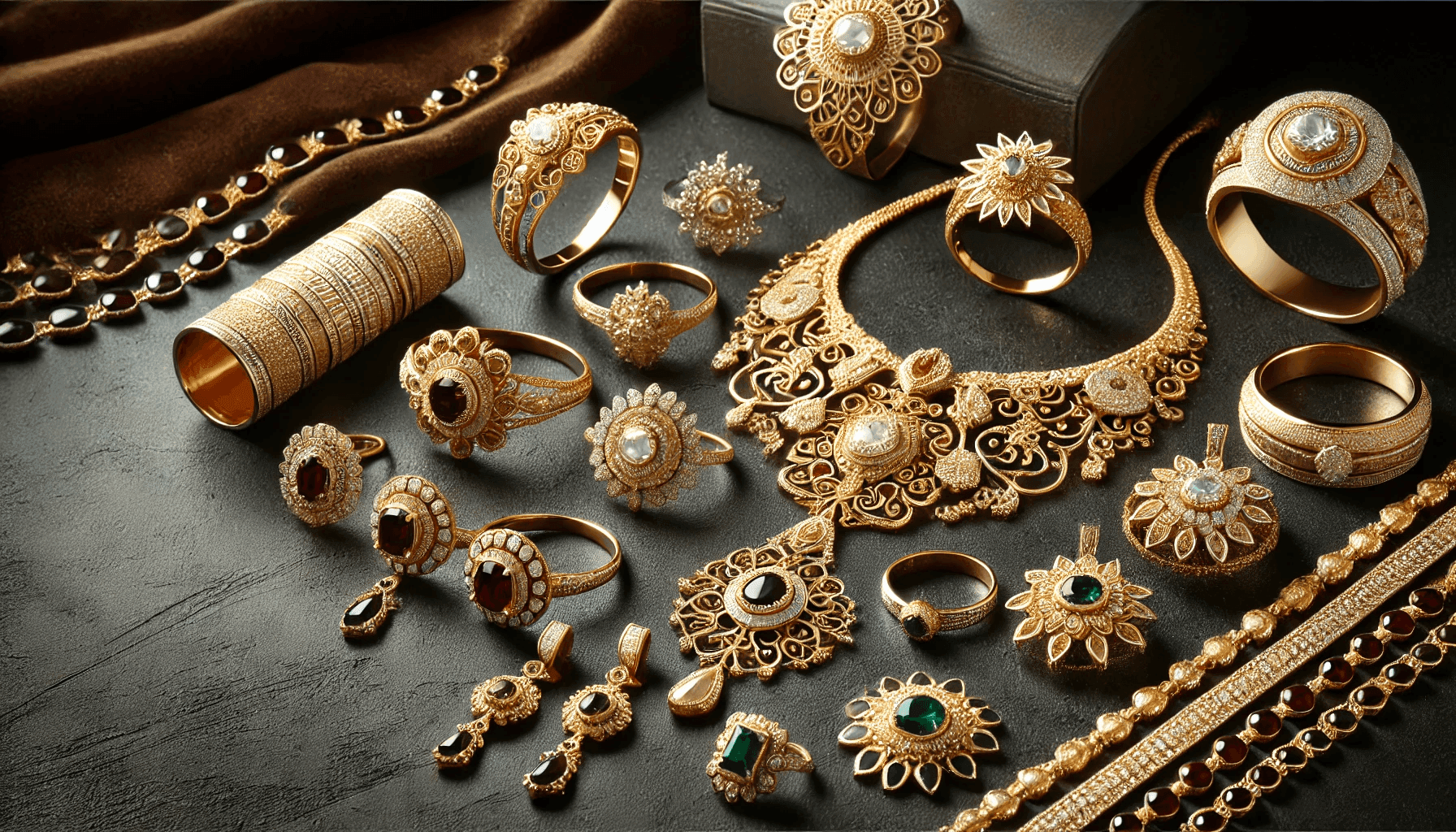Introduction
Gold jewelry is often cherished for its beauty, elegance, and timeless appeal. However, what if I told you that your gold jewelry might also have an unexpected property – magnetism? Imagine the surprise of seeing your favorite gold necklace or ring sticking to a magnet. In this article, we’ll delve into the fascinating world of gold and magnetism, focusing on 14k and 18k gold. We will explore whether these types of gold can be slightly magnetic, whether they can stick to magnets, and the scientific principles behind these phenomena.
Basics of Magnetism
Before diving into the specifics of gold, it’s essential to understand the basics of magnetism. Magnetism is a physical phenomenon produced by the motion of electric charge, resulting in attractive and repulsive forces between objects. There are three primary types of magnetism:
1. Ferromagnetism: This is the strongest form of magnetism and is observed in materials like iron, cobalt, and nickel. These materials can become permanent magnets.
2. Paramagnetism: Paramagnetic materials are attracted to magnetic fields but do not retain magnetic properties when the external field is removed. Examples include aluminum and platinum.
3. Diamagnetism: Diamagnetic materials are repelled by magnetic fields. This is a weak form of magnetism observed in all materials to some extent, including copper and gold.
Magnetism in metals has a rich history, with ancient civilizations using naturally magnetized stones (lodestones) to make the first compasses. Over time, our understanding of magnetism has evolved, allowing us to manipulate magnetic properties in various materials.
Composition of 14k and 18k Gold
To understand the magnetism of gold jewelry, we first need to explore what 14k and 18k gold are made of. Pure gold, known as 24k gold, is incredibly soft and malleable, which makes it unsuitable for most jewelry applications. To enhance its durability, gold is often alloyed with other metals.
– 14k Gold: This alloy contains 58.3% gold, with the remaining 41.7% consisting of other metals such as copper, silver, nickel, and zinc.
– 18k Gold: This alloy contains 75% gold, with the remaining 25% made up of similar metals used in 14k gold.
These added metals can significantly influence the physical properties of the gold alloy, including its color, hardness, and even its magnetic properties.
Can 14k Gold Be Slightly Magnetic?
Pure gold is diamagnetic, meaning it is repelled by a magnetic field. However, when gold is alloyed with other metals to create 14k gold, the magnetic properties of the additional metals come into play. For instance, if nickel or cobalt – both ferromagnetic materials – are part of the alloy, the resulting 14k gold could exhibit slight magnetic properties.
In practical terms, 14k gold may be slightly magnetic if it contains enough of these ferromagnetic metals. This phenomenon can be observed through a simple experiment: if you bring a strong magnet close to your 14k gold jewelry and notice a slight attraction, the alloy likely contains some ferromagnetic components. However, this magnetic attraction will be weak compared to strongly magnetic materials like iron.
Will 18k Gold Stick to a Magnet?
18k gold, being purer than 14k gold, contains a higher percentage of gold and fewer alloying metals. As a result, the likelihood of 18k gold being magnetic is lower than that of 14k gold. However, the specific composition of the alloying metals still plays a crucial role.
If 18k gold includes small amounts of ferromagnetic metals such as nickel or cobalt, it may show very weak magnetic properties. The strength of this magnetism will depend on the quantity and type of ferromagnetic metals present. Generally, the higher gold content in 18k gold means it is less likely to stick to a magnet than 14k gold.
Can We Make Gold Magnetic?

The allure of gold has captivated humanity for centuries, known for its gleaming beauty and exceptional properties. But what if we could add a new characteristic to this precious metal—magnetism? The concept of making gold magnetic is a fascinating intersection of science and imagination. Can gold, a metal traditionally known for its non-magnetic nature, be transformed into something that can stick to a magnet? Let’s explore this intriguing possibility and the scientific efforts behind it.
The Nature of Gold
To understand the challenge, we first need to revisit the inherent properties of gold. Pure gold (24k gold) is diamagnetic, which means it generates a weak repulsive force in the presence of a magnetic field. This diamagnetism is extremely subtle and often imperceptible without sensitive instruments. In other words, pure gold does not exhibit magnetism in any practical sense.
The Theory: Alloying Gold
One potential method to impart magnetic properties to gold is through alloying. By combining gold with metals that possess strong magnetic properties, such as iron, nickel, or cobalt, it’s possible to create an alloy that exhibits magnetism.
For example, a gold alloy containing significant amounts of nickel or iron might demonstrate slight magnetic behavior due to the magnetic nature of these metals. However, it’s important to note that this magnetism would be weak compared to pure ferromagnetic materials and would depend heavily on the proportions and types of metals used in the alloy.
This method has practical implications. For instance, in the jewelry industry, certain white gold alloys might exhibit minor magnetic properties if they contain enough nickel or other magnetic metals. However, these instances are relatively rare and usually not strong enough to stick to a magnet with noticeable force.
Advanced Techniques: Nanotechnology
Beyond traditional alloying, researchers have delved into more advanced techniques, such as nanotechnology, to explore the possibility of making gold magnetic. In this realm, scientists experiment with embedding gold nanoparticles with magnetic materials. This process involves creating composite materials where gold particles are combined at the nanoscale with ferromagnetic substances like iron oxide.
One notable study involved synthesizing gold-iron oxide nanoparticles. These composite nanoparticles exhibit magnetic properties due to the iron oxide component while retaining some characteristics of gold. The results, while promising, are still largely experimental and have yet to be widely applied outside of research settings.
Surface Modification and Coating
Another method being explored is the surface modification and coating of gold with magnetic materials. In this technique, a thin layer of magnetic material is applied to the surface of a gold item. This approach can impart magnetic properties to the surface without fundamentally altering the bulk properties of the gold itself.
For instance, a gold object might be coated with a thin film of nickel or cobalt, giving it the ability to interact with magnetic fields. While this doesn’t make the gold intrinsically magnetic, it allows the item to respond to magnets due to the magnetic coating. This method can be useful in specific industrial applications where magnetic properties are needed temporarily or only on the surface.
Practical Applications and Limitations
While the idea of making gold magnetic is fascinating, practical applications are limited. The primary use cases for magnetic gold alloys or composites are in specialized fields such as medical research, where gold’s biocompatibility and the added magnetic properties can be beneficial for targeted drug delivery or imaging.
In everyday scenarios, such as jewelry, the use of magnetic gold is not common. The primary reason is that the introduction of magnetic metals can alter the desirable properties of gold, such as its color, luster, and resistance to tarnish. Additionally, the level of magnetism achieved is generally weak, making it impractical for most uses.
Can Gold Be a Temporary Magnet?
The concept of temporary magnetism in gold is another area worth exploring. Temporary magnets are materials that exhibit magnetic properties only in the presence of an external magnetic field. Once the field is removed, they lose their magnetism. This behavior is typically seen in paramagnetic materials, which have unpaired electrons that align with magnetic fields temporarily.
Gold, in its pure form, is diamagnetic and does not exhibit temporary magnetism. However, if gold is alloyed with paramagnetic metals, the resulting alloy might show weak temporary magnetic properties when exposed to a strong magnetic field. For instance, a gold-nickel alloy could potentially exhibit such behavior, although the effect would be minimal and not easily detectable without specialized equipment.
Practical Implications of Gold Magnetism
Understanding the magnetism of gold alloys has several practical implications, especially for jewelry wearers and collectors:
1. Jewelry Wearers: If your gold jewelry exhibits slight magnetic properties, it is likely due to the presence of ferromagnetic metals in the alloy. This is normal and does not affect the quality or value of the jewelry. However, it is a fascinating quirk that can add to the story of your piece.
2. Testing for Authenticity: Magnetic testing can be a quick and easy method to test the authenticity of gold jewelry. Pure gold and high-karat gold alloys should not be strongly magnetic. If a piece of jewelry is attracted to a magnet, it might contain significant amounts of ferromagnetic metals or be gold-plated rather than solid gold.
3. Gold Investors and Collectors: For those investing in gold or collecting gold items, understanding the magnetic properties can help in verifying the purity and authenticity of gold items. It also aids in identifying the types of alloys used and their potential market value.
Conclusion
Gold’s interaction with magnetism is a fascinating topic that blends chemistry, physics, and practical knowledge. While pure gold is not magnetic, the alloys used in 14k and 18k gold can exhibit slight magnetic properties due to the presence of ferromagnetic metals. Understanding these properties can help jewelry wearers, investors, and collectors appreciate their gold items more deeply and make informed decisions about their purchases.
So next time you find yourself wondering if your gold jewelry is magnetic, remember the science behind it. Whether it’s a slight attraction or none at all, there’s a perfectly logical explanation rooted in the metals that make up your cherished pieces. Explore and test your gold jewelry with magnets, and uncover the hidden quirks that make each piece unique.


